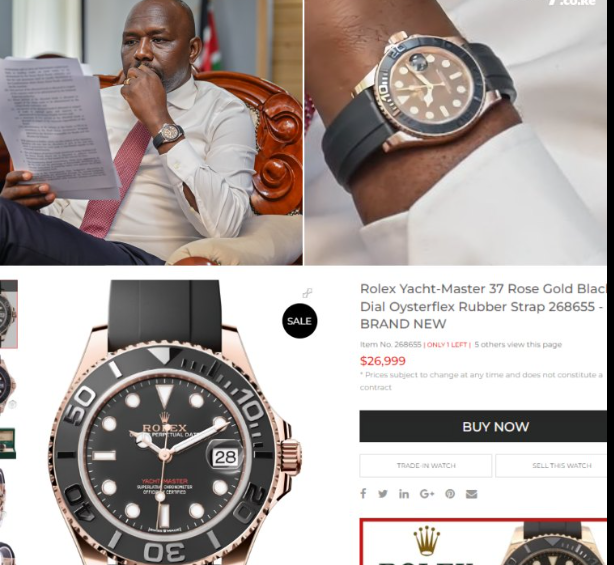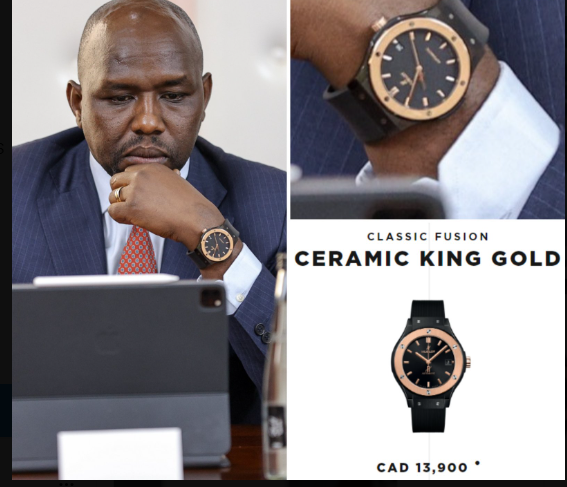Kenya’s Transport CS, Kipchumba Murkomen, has sparked debate with his latest accessory: a Ksh4 million Rolex Yacht-Master 37 in rose gold. The flashy timepiece has divided opinion, raising questions about ministerial opulence and optics in a nation grappling with economic challenges.

Murkomen’s supporters defend his right to personal luxury, arguing that his success and salary warrant such indulgence. They point to his meteoric rise from humble beginnings, claiming the watch is a symbol of his hard work and achievements. Additionally, some argue that Murkomen’s flamboyant style reflects a modern, confident Kenya on the world stage.
However, critics argue that the ostentatious display is insensitive to the plight of ordinary Kenyans struggling with poverty and rising living costs. They question whether such extravagance aligns with the government’s stated commitment to austerity and prudent spending. Additionally, concerns are raised about the potential for the watch to be perceived as a symbol of corruption or misplaced priorities.
Beyond the ethical debate, the watch has also ignited a conversation about materialism and conspicuous consumption. Some Kenyans see it as a reminder of the widening wealth gap, while others view it as aspirational, a symbol of success they too can strive for.
Ultimately, the Rolex Yacht-Master on Murkomen’s wrist is more than just a timepiece. It’s a potent symbol that has ignited a national conversation about wealth, values, and the role of public figures in a nation striving for progress. Whether Murkomen’s Millionen watch is seen as a badge of honor or a symbol of excess, one thing is certain: it has left an indelible mark on Kenyan discourse.














